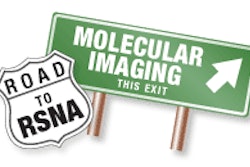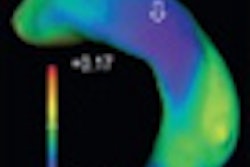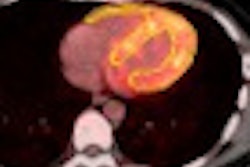Wednesday, December 1 | 11:20 a.m.-11:30 a.m. | SSK13-06 | Room S505AB
On Wednesday morning, researchers from Stanford University in Stanford, CA, will show preliminary study results that "strongly suggest" dual-tracer PET/CT imaging with FDG and F-18 sodium fluoride (F-18 NaF) increases the sensitivity of detecting malignancy compared to FDG alone.The study, co-authored by Frank Lin, MD, a PET/CT fellow at Stanford, found that dual-tracer imaging could be performed successfully by administering the second tracer a short time after the initial tracer injection, or as a cocktail of F-18 FDG/F-18 NaF.
"Cocktail tracer imaging with F-18 FDG and F-18 NaF can increase the sensitivity of PET/CT done with either agent alone, with the convenience of doing a single study," Lin added. "For added clinical flexibility, the study also shows that scans can first be done with FDG, with NaF given subsequently, if there are equivocal osseous lesions upon initial review of the images."
The prospective study enrolled 40 patients with a known history of cancer; they received both a conventional PET/CT scan (15 mCi of F-18 FDG) and a dual-tracer study (15 mCi of F-18 FDG and 5 mCi of F-18 NaF). Of the 40 patients, 29 patients received simultaneous tracer injections, while 11 of 40 patients received F-18 NaF a few hours after the initial FDG dose.
Of the 40 pairs of scans, nine results were scintigraphically negative and one result was excluded due to a technical question regarding the FDG injection in the dual-tracer study.
Of the remaining scans, eight of the 30 scans showed a greater number of lesions on the dual-tracer study than the scan that used FDG alone. As expected, all of the additionally detected lesions were osseous.




















